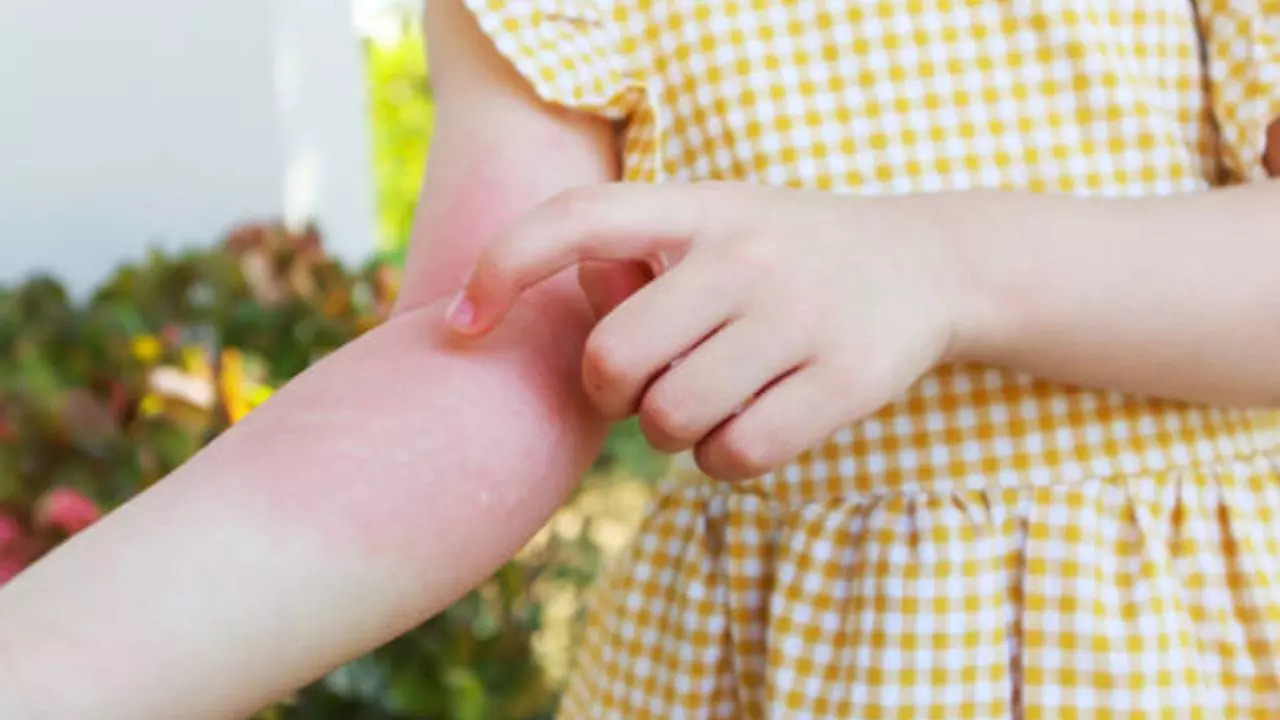Juvenile psoriatic arthritis: Expert explains the link between red rash and joint inflammation
Juvenile psoriatic arthritis (JPA) is a chronic inflammatory condition that affects children under the age of 16, characterized by joint pain, swelling and a red, scaly rash. About 0.5 percent to 2.5 percent of people in India are affected, so early diagnosis and treatment is important. We spoke to a health expert who explains the connection between the red rash and joint inflammation.

Juvenile psoriatic arthritis: Expert shares the connection between red rash and joint inflammation (Image credit: iStock)
Juvenile psoriatic arthritis (JPA) is a chronic inflammatory condition that affects children under the age of 16. It is a form of juvenile idiopathic disorder Arthritis (JIA) which occurs with psoriasis, a skin disorder characterized by red, scaly rashes. This condition accounts for about 6 percent of all cases of juvenile arthritis. A considerable number of people in India suffer from psoriatic arthritis, with prevalence rates ranging from 0.5 percent to 2.5 percent of the population.
However, despite its prevalence, psoriatic arthritis is under-recognised and under-treated. Dr Rajeev Gupta, Vice President, Rheumatology and Immunology, Medanta, Gurugram, said raising awareness is vital to ensure early diagnosis, proper management and better quality of life for people suffering from the disease.
Symptoms of Juvenile Psoriatic Arthritis
Dr. Rajiv Gupta explains that the symptoms of psoriatic arthritis vary from child to child and can range from mild to severe. Psoriasis is only one symptom of psoriatic arthritis, and not all children develop psoriatic skin rashes. The symptoms of JPA can vary, but generally include joint pain, swelling and stiffness, especially in the fingers and toes. These symptoms are often accompanied by the characteristic red, scaly rash of psoriasis, which may appear on the scalp, elbows or knees.
The inflammation can also affect other parts of the body, such as the eyes, leading to conditions such as uveitis. Unfortunately, the symptoms of JPA are often overlooked or misinterpreted as growing pains, leading to a delay in diagnosis and treatment. This delay can result in more severe damage to the joints and a reduced quality of life for affected children.
Causes and risk factors
Dr. Rajiv Gupta explains that the exact cause of juvenile psoriatic arthritis is still unknown, but it is thought to result from a combination of genetic and environmental factors. Genetics also appear to be involved: 40-80 percent of children with psoriatic arthritis have an affected first- or second-degree family member, such as a sibling, parent, grandparent or aunt/uncle. Children with a family history of psoriasis or arthritis have a higher risk of developing JPA.
Environmental triggers such as infection or physical trauma may also play a role in the onset of the disease. Additionally, certain genetic markers have been identified that may increase susceptibility to JPA, further highlighting the importance of genetic factors in the development of the disease. Risk groups mainly include children with a family history of psoriasis or psoriatic arthritis. Recent advances in genetic research and biological therapies have substantially enhanced our understanding and management of this condition.
Diagnosis
Diagnosis of juvenile psoriatic arthritis involves a thorough clinical evaluation, including a detailed medical history and physical examination. Doctors may also use imaging techniques such as X-rays or MRI scans to assess joint damage and inflammation. Laboratory tests, including blood tests for signs of inflammation and genetic testing, can help confirm the diagnosis. Early diagnosis is crucial to effectively managing JPA, as it allows for timely interventions that can prevent joint damage and improve long-term outcomes. Conversely, late diagnosis can lead to serious complications, including permanent joint deformity and functional impairment.
Treatment
Treatment of juvenile psoriatic arthritis aims to reduce inflammation, relieve pain, and prevent joint damage. Medications such as nonsteroidal anti-inflammatory drugs (NSAIDs), disease-modifying antirheumatic drugs (DMARDs), and biologics are commonly used to manage symptoms and control disease progression. Physical therapy plays an important role in maintaining joint flexibility and strength, while lifestyle changes including a balanced diet and regular exercise can enhance overall health. Recent advances in biological therapies have revolutionized JPA treatment, providing more targeted and effective options for managing the condition.
Get the latest news on Times Now along with the latest updates and top headlines from health and around the world.
Arthritis


